In 1997, Metro — Portland’s regional planning agency — issued its 2040 plan to guide the region for the next several decades. The plan was supposed to be in response to a 1995 Future Vision statement written by a group of citizens. Now Metro revising the Future Vision and its plans, but a close look at the region reveals that it should completely scrap the planning process.
Downtown Portland and Mount Hood with the Vista Avenue Bridge — often called the Suicide Bridge — in the foreground. Portland’s quality of life has declined so much in the last 30 years that it is almost as if the city is trying to commit suicide. Photo by Spicypepper999.
The 1995 Future Vision called for “housing affordable for all,” “accessible employment centers throughout the region,” “equitable economic progress,” “public safety,” and reductions in poverty. By all of these measures, the region is worse today than it was in 1997, and this decline is almost entirely due to Metro’s 2040 plan.
As noted in comments submitted to Metro by the Cascade Policy Institute (and which I wrote), Portland housing has gone from expensive in 1995 to unaffordable today — under standard mortgage rules, a median-income family cannot get a mortgage on a median-value home. This has increased wealth inequality. For example, the disparity between white and black homeownership rates grew from 25 to 30 percentage points.
Far from making employment centers more accessible, Metro’s anti-auto stance has increased congestion by 75 percent. Instead of relieving congestion, Metro has been building light rail, which doesn’t adequately serve any employment centers but downtown. While 28 percent of downtown workers took transit to work before the pandemic, less than 5 percent of workers in the rest of the region commuted by transit. Since only about 11 percent of Portland workers worked downtown (and far less today), it is no wonder that transit’s share of commuting has declined and, after Portland’s most recent (and most expensive) light-rail line opened in 2016, total transit ridership dropped.
Meanwhile, public safety has declined and high housing costs have increased poverty and homelessness. To make matters worse, Portland has some of the highest tax rates in the nation thanks to the need to pay for light rail, affordable housing, regional parks, and other Metro schemes.
Worst of all, Metro had a pretty good idea these things were going to happen as early as 1993. In that year, Metro reviewed data for the nation’s 50 largest urban areas to see which came closest to the model for what it planned for Portland. The answer was Los Angeles, which had the highest population density and fewest miles of freeways per capita of any major urban area, and which was also embarking on a program of building or operating nearly 500 miles of rail transit lines.
“In public discussions we gather the general impression that Los Angeles represents a future to be avoided,” commented Metro in that 1993 analysis. Yet “with respect to density and road per capita mileage it displays an investment pattern we desire to replicate.” Instead of realizing this meant there was something wrong with its plan, Metro decided Portlanders didn’t appreciate how wonderful Los Angeles really was, with some of the worst congestion and least affordable housing in the country.
It could be said that Metro’s plans worked. Today, Portland housing is less affordable than Los Angeles’ was in 1997 and Portland traffic is almost as congested as Los Angeles’ was in 1997. However, I suspect that if Portlanders knew these were Metro’s goals in 1997, there would have been a revolt.
The real problem is that planners can’t accurately foresee the future, so instead of planning for the future they plan for the past. Instead of helping people obtain the future they want, planners become so enamored with their plans that they persuade themselves that coercive tools such as restrictions on things that people want and subsidies for things that people don’t want are all good ideas.
This is why I am an Antiplanner. Planners get so caught up in their fantasies that they completely ignore reality when it is staring them in the face. Even when it is clear that their plans have failed — that “growing up not out” hasn’t made housing affordable, that building more light rail hasn’t gotten people out of their cars — they keep on doing the same thing. Metro, for example, continues to subsidize high-density housing projects and is busy planning at least two more light-rail lines.
My essay for the Cascade Policy Institute urges Metro to give up on long-range planning and begin to work on solving today’s problems today. This means doing things like greatly expanding the urban-growth boundary so there is plenty of room for new single-family housing, the kind of housing Oregonians want most. It means finding cost-effective ways to relieve congestion; focusing Portland’s transit system on buses, not rail; and developing a data-driven process for improving traffic safety.
Rather than futilely trying to reduce driving and increase multi-family housing, Metro should help people reduce the impacts of their transportation and housing choices by, for example, offering incentives to build zero-energy homes or buy more fuel-efficient cars. “Instead of trying, and failing, to control the future,” the essay concludes, “policies and programs like these will make it possible for Portland and its suburbs to be better prepared to adapt to that unknown future, whatever it may be.”


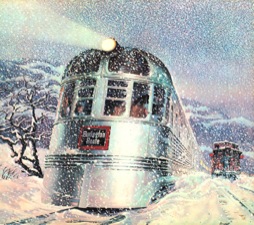
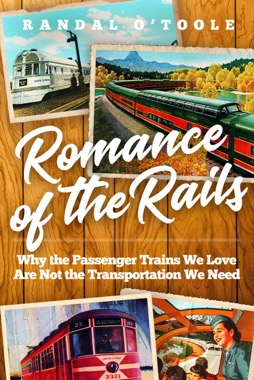

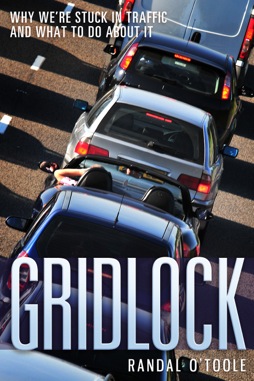
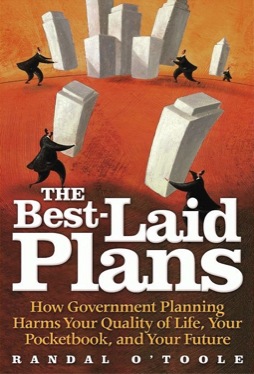
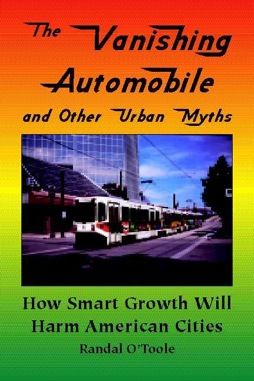
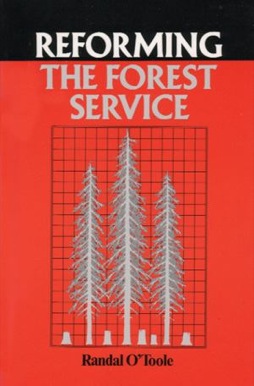
OMG you are pretending as if Portland is like Amsterdam. It’s not. Portland is a typical North American city, where the car and the single family home dominates. If you are looking for the causes of Portland’s problems you may want to look into the problems of car infested cities like Portland in general. Congestion is one of them. Another is one is noise/pollution. And guess what? If you don’t have proper transit (which Portland doesn’t have) nobody uses transit, but your conclusion from this is totally backwards.
Systematicvisionary,
I suspect that, by your definition, no city in America with the possible exception of New York has “proper transit.” Building proper transit for a city like Portland would cost scores if not hundreds of billions of dollars. Why should taxpayers spend that much when we already have a better transportation system in the form of cars and roads? Yes, the roads get congested, but there are solutions to that that cost a lot less.
Portland is not car-infested. Neither noise nor pollution are serious problems in Portland or most other American cities.
Portland is auto-liberated. Portlanders can reach far more destinations by car in 20 minutes than the best transit systems could take them in 40 minutes. Americans value that convenience and freedom.
There are no solutions to congested roads other than removing cars from the road. Transit is an improved transportation system that works everywhere. And more importantly it is the only transportation method that works well with an outdoor living room environment, where people can enjoy themselves instead of being annoyed by cars all over the place. Cars are loud. Any larger road in Portland is extremely noisy. Nobody wants to live next to a high speed roadway. It is impossible to create an outdoor environment, which offers something for human beings to combine with the automobile as a main transportation mean. Your vision of a „city“ is to destroy the city and to sprawl single family castles all over the place. That’s not only going to cost a fortune to maintain the infrastructure for that, but it would also eliminate all natural land and parks. That’s why we need compact cities within urban growth boundaries with as little car traffic as possible.
So in a city that is designed for cars people can reach more destinations by car than by transit? I don’t know maybe this has to do with the fact, that the city is build for cars not transit. You have identified the problem, but your conclusion once again is totally backwards.
Systematicvisionary needs to apply dollars and time to his transportation “City of the Future.” — what will it cost to create such a thing, how long will it take and where will the money come from.
I’ll wait …
Rovingbroker, if you’re a visionary, cost and time are inconsequential. Visions don’t have to be cost effective, achievable, or even realistic.
Systematicvisionary envisions a fantasy world where he/she/it can simply impose “proper transit” and forbid whatever annoys him/her/it, including especially cars, by decree.
In Fantasyworld, nobody would balk. The decree would be embraced by the masses. Life would be better for the lucky Utopians. Suburban peasants would be thrilled to be able to ride buses into Fanasyworld. Utopians would be drinking their lattes at quaint tables in the streets where those (ugh!) noisy annoying cars used to roam.
Sytematicvisionary would, if allowed, dictate every aspect of our lives.
Sytematicvisionary is the antithesis of the Antiplanner.
AP: “Why should taxpayers spend that much when we already have a better transportation system in the form of cars and roads?”
That system requires constant maintenance on the part of taxpayers (whether they drive or not) as well as the considerable (and rising) cost of a depreciating asset (a personal car for every adult who wants to participate in society), plus insurance and gas, and maintenance. Not to mention the cost in lost lives and health due to this inherently unhealthy mode of travel.
“Sytematicvisionary would, if allowed, dictate every aspect of our lives.”
AP lets people live how they want to live, (as long as they have a car, of course, because that’s what every one wants)
Go to your local 7-11 and ask the first 100 drivers pumping gas into their cars if they would rather have a free lifetime bus pass or their gas guzzling cars and report back to us.
Sytematicvisionary: Your various statements like “problems of car infested cities” etc highlight an important problem with your perspective. Namely that it is motivated by fantasy and emotional rather than rationality and empirical analysis. No viable public policy can be based on fantasy or emotion. When such policies are enacted they often make things worse than better. Also, the one redeeming thing of Portland’s planning schemes is that unlike 30 years ago, there is now three decades of information as to why specifically such policies do not work and what needs to change to make them work. Given the crises these policies have created it is getting difficult to ignore their negative effects.
It’s a fantasy that congestion can be reduced by building more roads and by increasing the number of cars and number of trips done by cars. That’s the real fantasy, that the Antiplanner has. There is no example in history, where this has ever worked. So why are you so emotional about attacking light rail, bicycle lanes and middle housing as a proven solutions to congestion, that also evidently increases the quality of life? Saying the plan has not worked is like saying that water doesn’t help against fires, because someone unsucessfully tried to extinguish a wildfire with a water bucket. Portland is still a car-infested city with mostly detached single family homes. Portland is still the very definition of what the Antiplanner promotes. Blaming some isnignificant government plan that virtually had no impact on issues that are known to be related to car-centric cities like Portland (because the data shows it) is ridiculous. Maybe it is time for Americans to start looking overseas for why their cities are such a failure of quality of life and understand that you can’t create livable outdoor spaces by designing infrastructure and housing around the automobile.
janehavisham wrote in part, “That system requires constant maintenance on the part of taxpayers … ” and on and on.
Public transportation in all forms requires the same. Of course, the gasoline that we put into our cars is highly taxed as are some roads and bridges. In fact, the Ohio Turnpike is one of the best maintained and improved highway and is supported only by tolls — which are today collected automatically so no one needs to stop to pay.
It’s not the busy highways that are unprofitable. It’s the low density residential streets and infrastructure that only serves a small number of people that is a financial maintenance nightmare. Guess why roads in other countries like Japan, France, Germany, Netherlands are in so much better condition?
Systematicvisionary asked us to, “Guess why roads in other countries like Japan, France, Germany, Netherlands are in so much better condition?”
1. Quantify ” … so much better condition … ” with examples.
2. Quote some numbers (with sources) of “financial maintenance nightmares.”
3. This is not a guessing match. Please tell us why roads in other countries are in so much better condition with examples.
4. While you’re at it, where do these countries get the money necessary to keep their roads in “so much better condition,.”
By the way, until recently I drove on US streets, roads and highways about 30,000 miles per year. They were all in good to excellent condition and universally took me quickly and safely to may destination … even in winter … one time in a lake effect snowstorm.
Apparently you haven’t seen much of the world. Just a reminder that the US is not the best country in the world. The US is lacking behind on many metrics. The poor state of US infrastructure is just one of them. Everybody who does some overseas travel knows, that roads in countries like Japan and Germany are in a much better shape, but it isn’t just the roads, but the infrastructure in general. It is no surprise given, that the US has the highest amount of asphalt per capita of any country in the world, but spends no more but even less money on maintenance as compared to many other developed countries. You may want to check out StrongTowns. They have done the math of why automobile suburbs are such a financial pain.
whew…ive been on some of that toll shit in NJ and PA….it will make your teeth fall out
Systematicvisionary wrote, “Apparently you haven’t seen much of the world.”
Factually I’ve seen North America (USA, Canada and Gulf of Mexico), Europe and Asia. And I keep coming back home to the United States of America.
i grew up in a smallish southern capital city…raleigh, NC. had to ride transit out of necessity….it was first operate by the power company…ran til 11 pm on some routes. then the big switch over in the late 70s or so. the ride experience was rarely an issue as far as discomfort….frequency and uncovered bus stops often sucked. on a recent trip back I noticed an older apartment complex area….completely packed in the parking lots and streets with cars driven by 99 percent latinos….and raleigh wants to slap some BRT in a few areas….these new lower income drivers will come around? hell…many days I prefer not getting behind the wheel.
Effects of NYC congestion pricing:
Down:
– car crash injuries
– school bus delays
– parking violations
– traffic noise complaints
– freedom
– America
Up:
– transit ridership
– number of visitors
– cars on the street
– communism
https://www.nytimes.com/interactive/2025/05/11/upshot/congestion-pricing.html
“In fact, the Ohio Turnpike is one of the best maintained and improved highway and is supported only by tolls — which are today collected automatically so no one needs to stop to pay.”
Great, let’s toll ALL highways, so that drivers are paying closer to what driving actually costs.
(Sorry, in the congestion post above “cars on the street” should have been under the “down” category)
“It’s a fantasy that congestion can be reduced by building more roads.”
Patently false. Where I live, a 4-lane interstate highway was expanded to 8-lanes. Previously rampant congestion has been completely elimination (“reduced”, on steroids). That is not an isolated case.
janehavisham:
The following from Wikipedia …
Federal fuel taxes raised $36.4 billion in Fiscal Year 2016, with $26.1 billion raised from gasoline taxes and $10.3 billion raised from diesel and special motor fuel taxes. The tax was last raised in 1993 and is not indexed to inflation. Total inflation from 1993 until 2017 was 68 percent or up to 77 percent, depending on the source.
Public policy
Some policy advisors believe an increased tax is needed to fund and sustain the country’s transportation infrastructure, including mass transit.
https://en.wikipedia.org/wiki/Fuel_taxes_in_the_United_States
Until electric cars become a sizeable part of our transportation system, an appropriate fuel tax appears to be the best solution to the problem of building and maintaining our streets and highways.